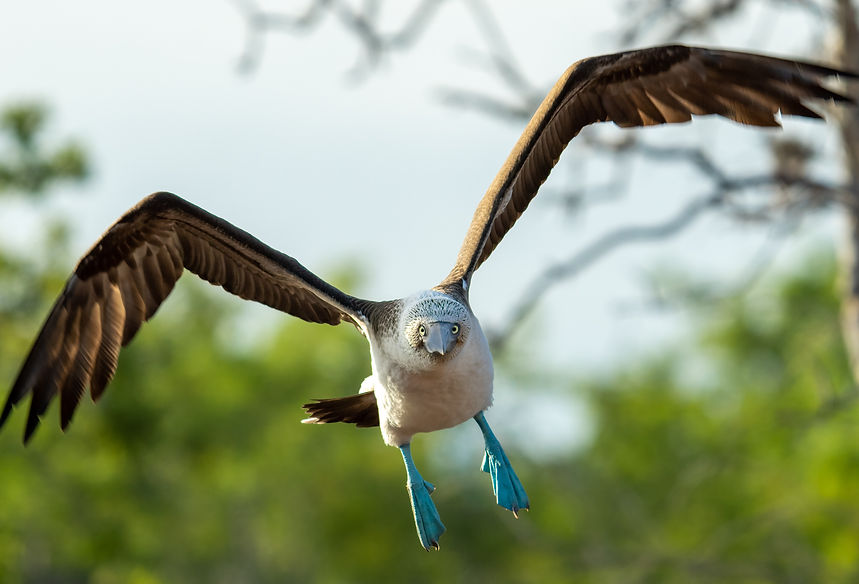
Galapagos Islands
The Galapagos Islands are an archipelago of volcanic islands located in the Pacific Ocean and are part of the Republic of Ecuador. These islands possess a set of environmental conditions that set them apart form all other island groups in the world. Stradling the equator at the intersection of four ocean currents - cool and warm - allows the islands to have both tropical and temperate climates. The diversity is reflected in the collection of plants, animals, and landscapes.







The volcanic mountains first erupted above the surface about 7-9 million years ago. Since the late 1990's, there have been nine eruptions in the archipelago. Largely uninhabited and very protected, 97% is declared a national park, 3% is roughly home to 30,000 people. The islands are in a constant state of change with new formations emerging or sinking due to continuous volcanic activity. Landscapes are very diverse ranging from lava fields, lava flows, lush highlands, rocky terrains, and beautiful beaches.

The Blue-Footed Booby

Blue-footed boobies are aptly named and take great pride in their fabulous feet. They are known for showing off their feet with a high-stepping strut. Their scientific name is Sula nebouzii, which comes from the Spanish slang term "bobo" which mean foolish or clownish.




Blue-footed boobies mate for life and do not have nests. Parents protect their eggs and keep them warm using their large webbed feet.




Blue-footed boobies diving in the Galapagos is seriously exciting. These magnificent creatures are capable of plunging into the water from heights of up to 328 ft. These beautiful birds are impressively skillful, fast, and fun to photograph! Just before they hit the water, they achieve speeds of up to 60 mph.








Galapagos Penguin




The Galapagos Penguin is the most northerly penguin in the world. They weigh about 5lbs and are a flightless bird. The current that flows north from the Antarctica along the western coast of South America enables the penguin to live on the islands. A special treat when visiting the Galapagos.





The Galapagos Giant Tortoise
The Tortoise can live for over 100 years. Sub species are different from one island to another and have adapted to the environment and evolved in order to survive the environs of each island.

The tortoise can withstand a lack of water up to one year. They can grow to be 6 feet long weighing up to 700lbs. Females weigh up to 400lbs. They are only found on the Galapagos islands.







Spend the night in the highlands at the Tortoise Camp under the stars and with the roaming tortoises.




The Frigatebird
The Frigatebird, with it's long wings and forked tail look very prehistoric. They have an 8ft wingspan, the largest wingspan to weight ratio of any bird on the planet. There are two species magnificent and great. Males can be up to 8ft long.

The male red pouches take about 2o minutes to fully inflate and they inflate to attract passing females. Females have a white chest and a dark head. Juveniles start with a white head and belly and gradually obtain darker heads.









The Land Iguana




The Galapagos Land Iguana may weigh up to 25lbs and be 4 feet long. They have a short head and powerful hind legs with sharp claws on their toes, but despite their intimidating appearance they are primarily herbivores – feeding on prickly pear leaves and fruit.


Land iguanas and marine iguanas diverged about 8–10 million years ago. They are large and in charge, fantastic to see.



The Marine Iguana





The marine iguana diverged from the land iguana some 8 million years ago, which is older than any of the extant Galápagos islands. It is therefore thought that the ancestral species inhabited parts of the volcanic archipelago that are now submerged.
Marine Iguanas are the only ocean going lizard in the world. They spend their days in the water eating seaweed and plant life. They gather together in the late afternoons to warm up and conserve energy and spit out the salt through their noses. They are about 5 feet in length an can weigh a little over 3lbs.







